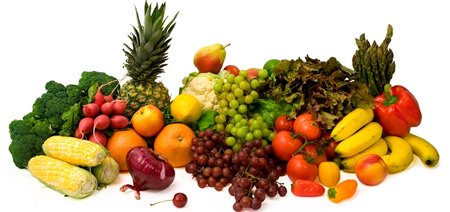By Violet Smith
Eating healthy, delicious meals is more expensive than eating junk (or eating the same boring thing every single day), right?
Not necessarily!
Did you know that, with a little organization and creativity, you can save money and still eat healthy, tasty, high-quality foods?
Step 1. Plan your meals. Set aside regular blocks of time for planning meal and making your grocery list. Try looking for recipes on the Internet.
Step 2. Shop smart. Consider the time of day, day of week, and even week in the month that you shop. Generally, the grocery is the least busy early in the morning, in the middle of the week, and on any day but the first day or two of the month (when many people get paid).
Food Choices That Will Save You Money
Here are some healthy foods to add to your grocery list
• Beans. Can be used to make nutritious, hearty soups, and can be a main course with the addition of fresh vegetables or rice.
• Brown Rice. Great addition to leftover meat and veggies. Although brown rice is slightly more expensive than white, the nutritional payoff is well worth it. Another inexpensive, easy-to-fix grain, millet, is best when bought fresh. Simply rinse and toast before using it in recipes.
• Whole-wheat Pasta. Quick and easy to prepare, and can be paired with veggies, meat, or a fresh salad. Get creative by adding different vegetables, spices and herbs.
• Fresh vegetables and fruit. These are essentials that should always be on your list. Buy when they’re in season, to ensure optimal taste and nutrition. You can also rely on frozen varieties. Veggies make great stir-fries, while fruit is good for a quick nutritious snack.
• Meat and fish. Try the newer tuna and salmon pouches, and shop for inexpensive cuts of meat that work well in stews and casseroles.
• Condiments. These add flavor and interest to your dishes. Keep a selection of dried herbs, spices, curry powder, marinades, vinegars, tomato and soy sauces, along with stock cubes, in your cupboard. Try experimenting with the new flavors as well.
Money-Saving Cooking Tips
• When cooking, make extra portions. Then, either freeze them, or use them later in the week for lunches or quick suppers.
• Save your vegetable trimmings to make your own vegetable stock. Not only do you save money, but vegetable stock also makes a nutritious base for casseroles, soups, and Crockpot cooking.
• Buying in bulk is almost always cheaper; you can freeze perishable items (such as meat, milk, and even bread) in smaller portions to use as needed. It’s always a good idea to buy non-perishable items in bulk (canned foods, dried beans and grains, etc.).
• Use less expensive cuts of meat for casseroles that you slow cook; add extra vegetables and beans to make the meal go further.
• Capitalize on one-pot dishes, which generally save prep time, money, and dishwashing, and often make great leftovers.
• Limit your dining out, especially when it comes to fast food, since you’ll find yourself spending unnecessarily on items that are high in fat, salt, and calories, which short-change you in the nutrition department.
Don’t Forget Your Daily Healthy Eating Goals:
• Limit your intake of junk food
• Drink lots of water (at least 8 cups a day)
• Limit salty and sugary foods
• Avoid eating foods high in saturated fats
Though it takes a little planning, creativity, and work, the rewards of healthy, smart shopping can be a happier body…and wallet.
via Blackdoctor





